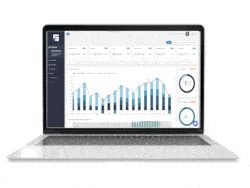Ever had a commercial real estate appraisal? Are you curious what you could do to help the process?
If speed is important for your next commercial real estate transaction, keep communication in mind during the commercial real estate appraisal. Frequently, investors need to establish the market value of a property they are purchasing or rehabbing. This is achieved through the commercial real estate appraisal. Lenders require a final appraisal done by a qualified appraiser before completing the loan process. They need to understand the current or future potential value of the property prior to finalizing any loan. Through the appraisal process, communication, or lack thereof, is the number one factor contributing to delay.
How does the appraisal process start?
At the time a lender knows they need an appraisal, they reach out to appraisers to check on their availability. Once the appraiser agrees to take on the work, an engagement letter agreement is signed between the appraiser and the lender or management company (client). The appraisal work begins shortly thereafter.
The typical commercial real estate appraisal should only take 3-4 weeks once the work has been agreed to. However, lack of communication from the borrower can significantly slow down the process. Lack of communication comes in many forms, according to David D. Passmore, MAI from Rally Appraisal, LLC. This includes providing incomplete information, late information, or even inaccurate information.
Lack of Communication
The borrower must provide all the relevant documentation to the appraiser, as well as a clear intended use and/or plans for the property, once work begins. If they do not, the appraiser is unable to complete the written report. The written report is based on the factual data about the property. This information includes building drawings, property income statements, leases, rent rolls, and tax information. Much of the same information that is provided to the lending institution is also provided to the appraiser for their analysis. If anyone of these pieces is missing, it is an incomplete picture for the appraiser and they cannot complete their analysis. Similarly, if the borrower is slow to provide information, even if it is accurate, the appraiser is delayed in the completion of the written report.
On occasion, inaccurate information is provided to the appraiser. Inaccurate information includes outdated financials or other information about the property that is no longer true or valid. The appraiser needs the most recent and accurate data to write an equally accurate report. For instance, if the appraiser is looking at a property that has multiple buildings and one of the building’s information was missing or absent, the appraisal is not accurate. When something like this occurs, it causes rework and additional time delays in the process. Sometimes the change is so significant, the appraiser must start over completely with their analysis.
Getting in Line
Often borrowers order a commercial real estate appraisal early in the loan process so they can get in the queue for upcoming appraisals. Appraisers usually have several weeks of work already lined up. In all likelihood, it will be a few weeks before the appraisal work can start. This process works well if all the documentation is ready to go when the appraiser is ready to begin. If the borrower has only provided a portion of the information, the appraiser can complete the inspection but then must wait for the remaining documentation before they can complete their appraisal. If this happens, the appraiser will move onto the next work in line and you will lose your place in line until the information is provided.
What Can You Do to Help Expedite the Commercial Real Estate Appraisal Process?
Borrowers can do several things to help speed up the process.
- Provide all existing and relevant documents requested by the appraiser.
- When the appraiser asks a question, respond the same day and provide clarifications or anything that is requested.
- Provide accurate information.
Below is a list of relevant documents most appraisers will require you to provide.
Appraisal Checklist
- Site plans
- Building drawings
- 3 years of income statements
- 3 years of operating expenses
- Leases
- Rent rolls
- Multiple years of tax information
- Excel outputs of all related costs for any work to be performed
- Intended use of the asset
- Results of any environmental assessments
- Pro forma expectations
What goes into an appraisal?
Most appraisals begin with a physical inspection of the property. This includes the appraiser looking at the surrounding area and taking pictures of the property in question. This inspection process is conducted based on a set of standards appraisers follow. Members of the Appraisal Institute follow the International Standards of Practice for Inspecting Commercial Properties.
Generally, someone from the borrower’s firm or the borrower themselves attend the site inspection. A walk-through of the property is to observe both the interior and exterior of any buildings on the property. The walkthrough does not include any sort of environmental inspection. Nor does the appraisal inspection include an assessment of the working condition of the mechanical or structural elements of the building.
While conducting the inspection, it gives the appraiser the opportunity to ask questions. Appraisers ask questions about the property itself, development plans, development plan timelines, and operations of the business. The appraiser also takes pictures to include in the written report. While writing the report, appraisers frequently consult these same pictures. This allows them to line up the information that was provided about the property with a visual record.
Once the physical inspection is complete, the appraiser moves on to the research phase. Information about zoning, regional, city and neighborhood data are all collected. The appraiser is seeking to understand the socioeconomic, governmental or environmental conditions that potentially impact the value of a property. Also researched at this time is information about comparable properties. These properties could be close. But, they could also be some distance away if it is difficult to find something comparable. For instance, wineries are not that common. In that scenario, wineries in a bordering community might be considered as a comparable.
When analyzing the comparable real estate, the appraiser looks comparatively at:
- That the size of the site area
- The buildings on the premise
- The size of the buildings
- The age of the buildings
- The condition of the buildings
- The cap rates for comparable investments
- Costs and depreciation
- Comparable sales
Final Steps for the Commercial Real Estate Appraisal
In the final step of the process, the appraiser pulls all the information together into a written report that includes:
- Overview of the most significant points about the property
- Definitions – The description section provides the scope of the report, definition of market value, information about the property and overview of the appraisal process
- Descriptions – This section goes into the analysis of the community, the neighborhood, the site, any improvements to the property and the highest and best use analysis of the property
- Valuation Conclusion – This section outlines the methodology used, and the values obtained through a cost approach, a direct sales approach, and an income approach. A final conclusion is also provided.
Once the written appraisal is complete, it is provided to both the lender and later to the borrower for their review. The lender can then move forward with the completion of the loan process. Either party should direct any questions to the appraiser for clarification. The final written report includes a conclusion on the value of the property based on the appraiser’s analysis.
Check out our most recent post on the new thresholds on commercial real estate appraisals and be sure to contact us for a personalized demo!






